Highlights
Leather made from animal hide has significant environmental costs. For this reason, these entrepreneurs developed a natural and organic vegan leather using the nopal cactus. The vegan leather has two parts: a base material and a bioresin. The nopal-based bioresin goes over the base material to form the leather. The nopal cactus requires little land, no extra water, and no pesticides, herbicides, or other toxins to grow. The mature leaves are harvested every six months. Each plant can keep producing leaves sustainably for up to eight years.
We all like to look fashionable sometimes. But having so many colors and styles available at our fingertips each season comes with significant environmental costs. According to a report published by the United Nations Environment Program in 2019, the fashion industry is responsible for 10% of global emissions and 20% of wastewater each year. Based on these findings, the newly formed United Nations Alliance for Sustainable Fashion is calling for the textile industry to reinvent itself.
Within the fashion world, the leather industry is one of the worst offenders. Leather is made from animal hide, and just raising the number of animals needed to satisfy fashionistas worldwide uses vast amounts of water and emits lots of carbon dioxide and methane. The most polluting part of the industry, though, is what comes next:
tanning.
Tanning is the process of treating the raw animal hide so it can withstand environmental forces like heat and rain. The tanning process uses a variety of harsh, toxic chemicals that pollute the water and sicken those who work in and live near tanneries.
To address some of the worst concerns of the leather industry, new
vegan
products have come to market that are not based on animal hide. However, this vegan leather is often made from plastic, which still results in massive use of water and oil. Luckily, even more sustainable options are quickly emerging. On this new frontier of sustainable fashion are Adrián López Velarde and Marte Cázarez, who have developed a new line of 100% natural and organic vegan leather using the nopal cactus that is abundant in their native Mexico.
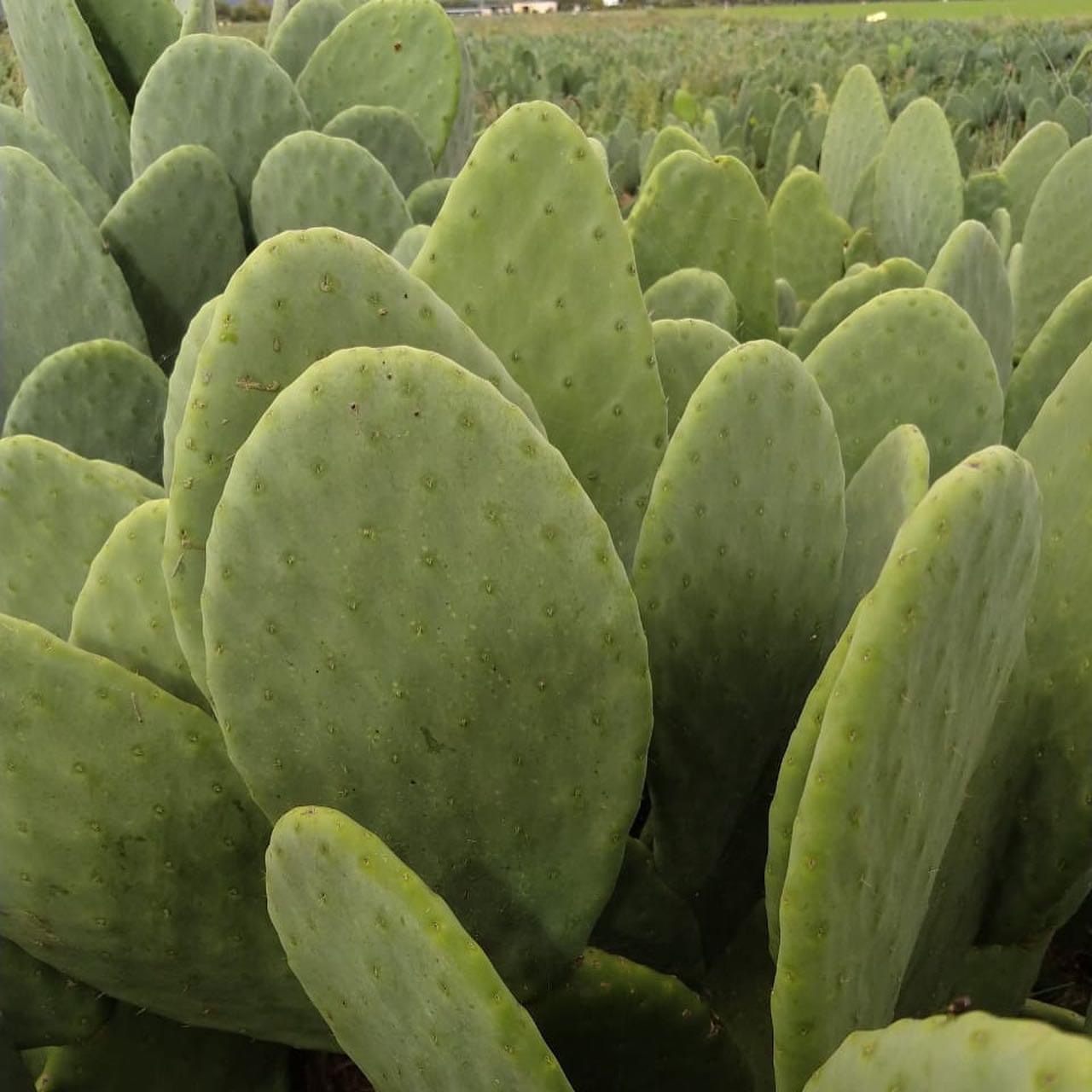
Figure 1. Opuntia ficus-indica, the nopal or prickly pear cactus
[Source: Image courtesy of Desserto]
Creating Vegan Leather
López Velarde and Cázarez, both from Mexico, met during a study abroad program in Taiwan in 2011, where López Velarde was studying economics and international relations and Cázarez was learning Chinese. They reunited in Mexico in 2013. At the time, López Velarde was working as an automotive engineer and Cázarez worked in the aloe vera industry before moving into fashion.
After learning about the pollution generated by the fashion industry, and especially leather products, these two friends became very concerned. Alternative products were starting to become available in the U.S. and Europe, but not yet in Mexico. They decided to leave their jobs to find an alternative and sustainable solution to the leather industry.
The leather that López Velarde and Cázarez created has two parts: a base material and a
bioresin.
The base material provides the shape and structure that is held together by the bioresin. A
resin
refers to any type of adhesive or glue that holds molecules together. One example of a natural resin you may be familiar with is pine sap, a resin produced by pine trees that makes your hands all sticky. Industrial resins, like plastics and other toxic chemicals, cause pollution because they are not biodegradable. In contrast, bioresins are engineered resins that have only natural ingredients and are either compostable or biodegradable.
López Velarde and Cázarez knew their solution would have to be plant-based in order to create a product that had significant reduction in water waste, land use, and chemical pollutants. They considered a variety of plants before deciding on one that was right in front of them—the nopal cactus. The nopal cactus, Opuntia ficus-indica, also known as the prickly pear cactus, is abundant throughout Mexico.
The nopal leaves are full of fiber and nutrients and are commonly eaten across Latin America. Nopal is also known to be good for the skin and commonly added to soaps and shampoos. “We know that nopal is used on the skin, and we thought — why not use it to make a kind of skin? This became the basis for our vegan leather,” remarked Cázarez.
López Velarde and Cázarez used nopal for both the bioresin and the base of the leather product, and each had to be studied separately before being tested together. The pair also recruited chemist friends, since identifying the two components of the vegan leather required a series of chemistry-based tests.
For the bioresin, the chemists working with López Velarde and Cázarez isolated proteins from the nopal cactus that provide pigment and strength to the plant. They determined the best process to extract the proteins, which then had to be mixed with other natural ingredients to create the bioresin. Aside from the mission of environmental sustainability, the ingredients had to be natural because synthetic products would cause the nopal proteins to break down and lose their adhesive properties. A series of studies revealed the optimal mixture of nopal proteins and other organic ingredients that would preserve these properties.
Next, López Velarde and Cázarez needed to find the best base material to support the bioresin. Through another series of tests, they decided on a specific combination of materials based primarily on cactus and cotton. The nopal-based bioresin goes over this base material to form the leather. “It took us about two and a half years to find the right combination of materials,” explained Cázarez. “In the end we found the perfect balance of sustainability and quality.”
Of course, this vegan leather would not be possible without the nopal, which López Velarde and Cázarez grow on their small farm in Aguacalientes in central Mexico.
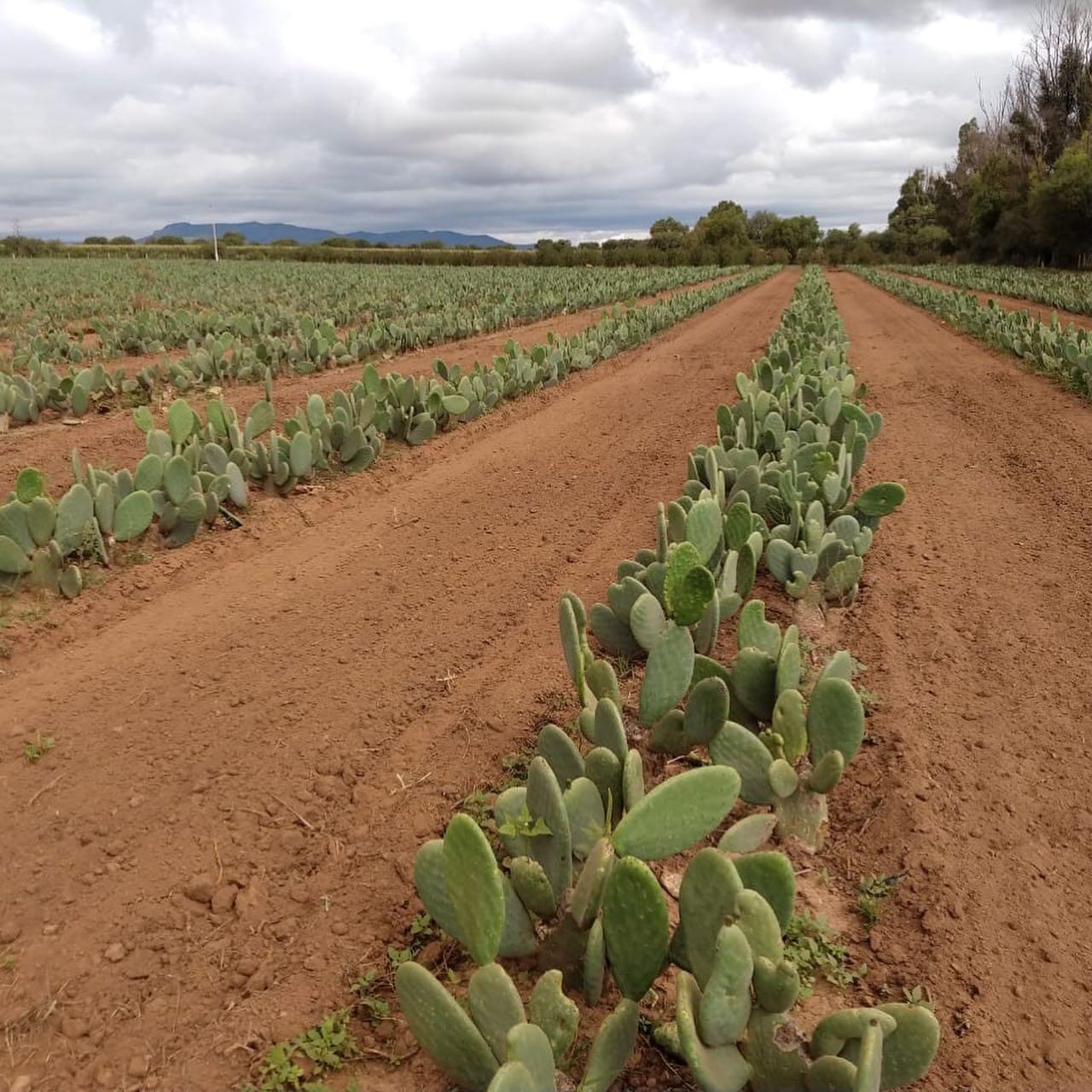
Figure 2. Nopal farming
[Source: Image courtesy of Desserto]
This region of Mexico is known for growing cactus and similar crops because of its good climate and abundant land. Rather than using water and land to raise greenhouse gas-emitting animals for their hides, the nopal cactus requires little land, no extra water, and no pesticides, herbicides, or other toxins to grow. Every six months, López Velarde and Cázarez and their team harvest the mature leaves. The smaller leaves are left growing and are picked in the next harvest. The same plant can keep producing leaves sustainably for up to eight years.
Once harvested, the nopal leaves are ground together into a plant pulp and left to dry for several days in the greenhouse. “We use the sun to dry the nopal rather than a machine because we want our production process to use as little energy as possible,” Cázarez commented. The position of the pulp is changed every 12 hours so the whole batch dries evenly. After three days, the dry fibers are ground into a powder where machines extract the proteins from the nopal. These proteins form the bioresin.
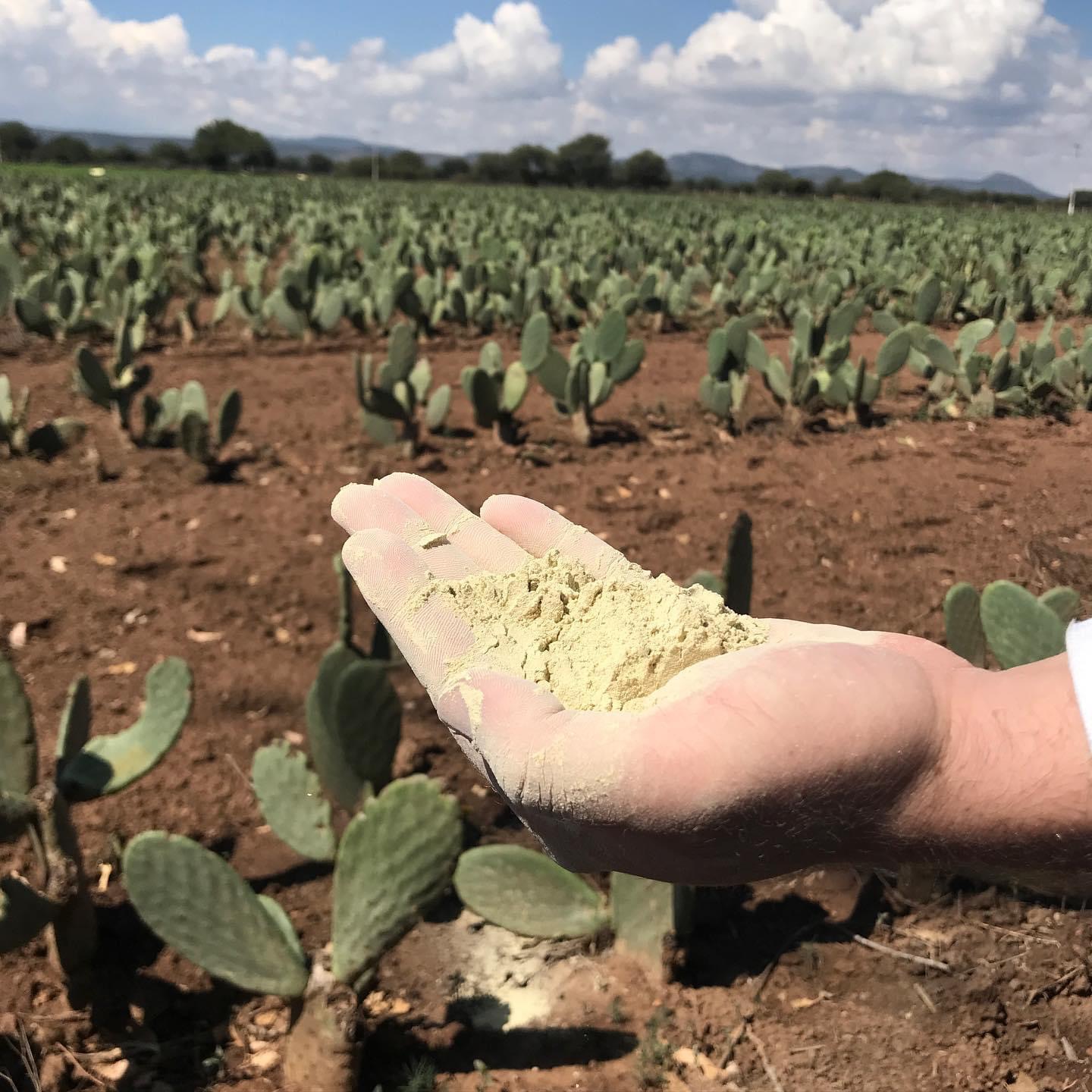
Figure 3. Powder produced from dried nopal leaves
[Source: Image courtesy of Desserto]
There is extra pulp left over in this process, but López Velarde and Cázarez do not let anything go to waste. They work with a variety of partners in the food, health, and cosmetics industries to make sure that everything they produce is put to good use.
Once the proteins are extracted from the nopal pulp, the powder is cleaned again and sent to Mexico City to be processed in the factory. There, the nopal powder is turned into bioresin and applied to the base material to form sheets of leather. This is all according to the patented process that López Velarde and Cázarez have developed for their leather brand called Desserto.
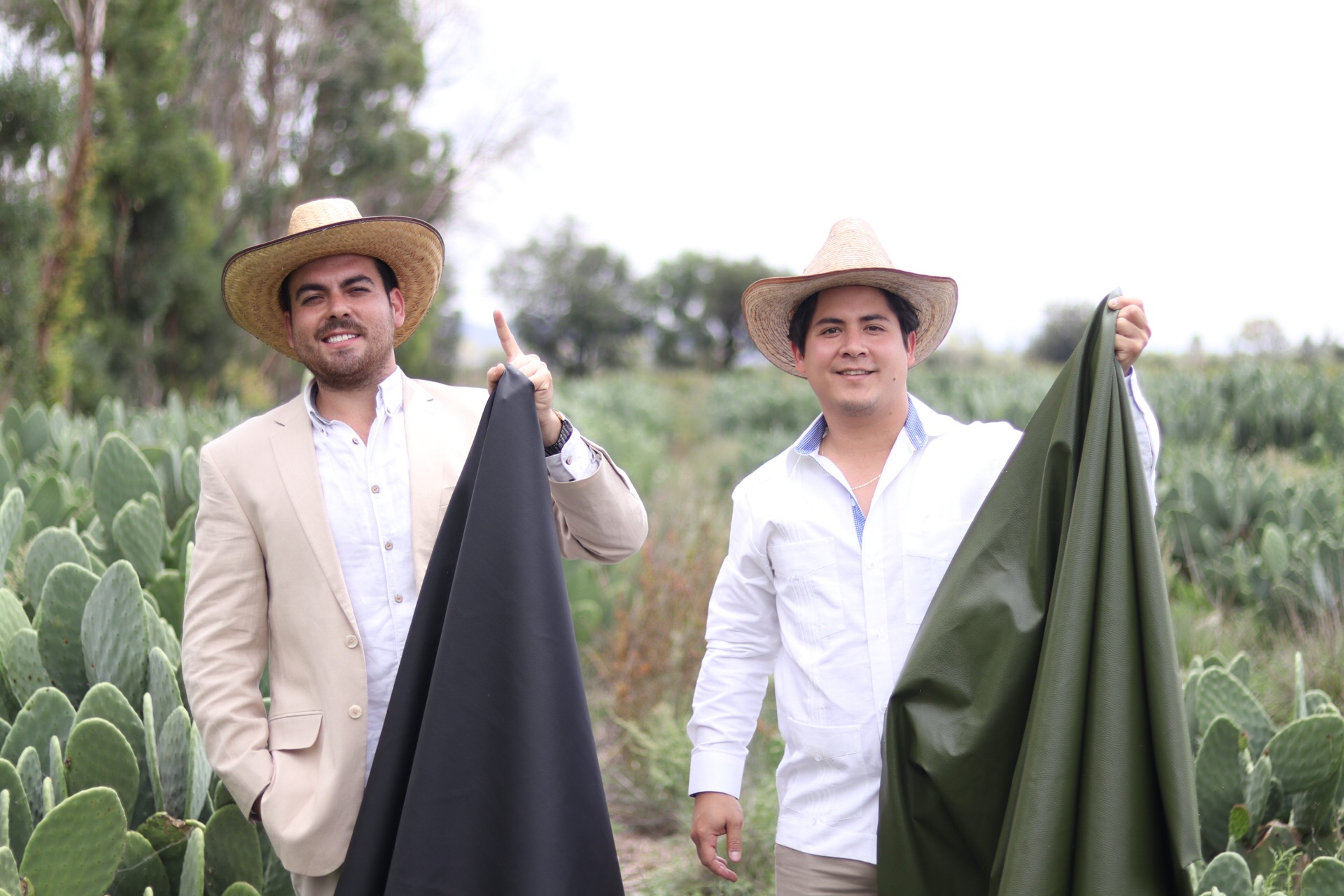
Figure 4. López Velarde (left) and Cázarez (right) with their patented vegan leather, Desserto
[Source: Image courtesy of Desserto]
Desserto is promoted by the fashion company López Velarde and Cázarez created called Adriano di Marti. They produce the vegan leather and then contract with designer brands who use it to create purses, bags, wallets, boots, and other leather products.
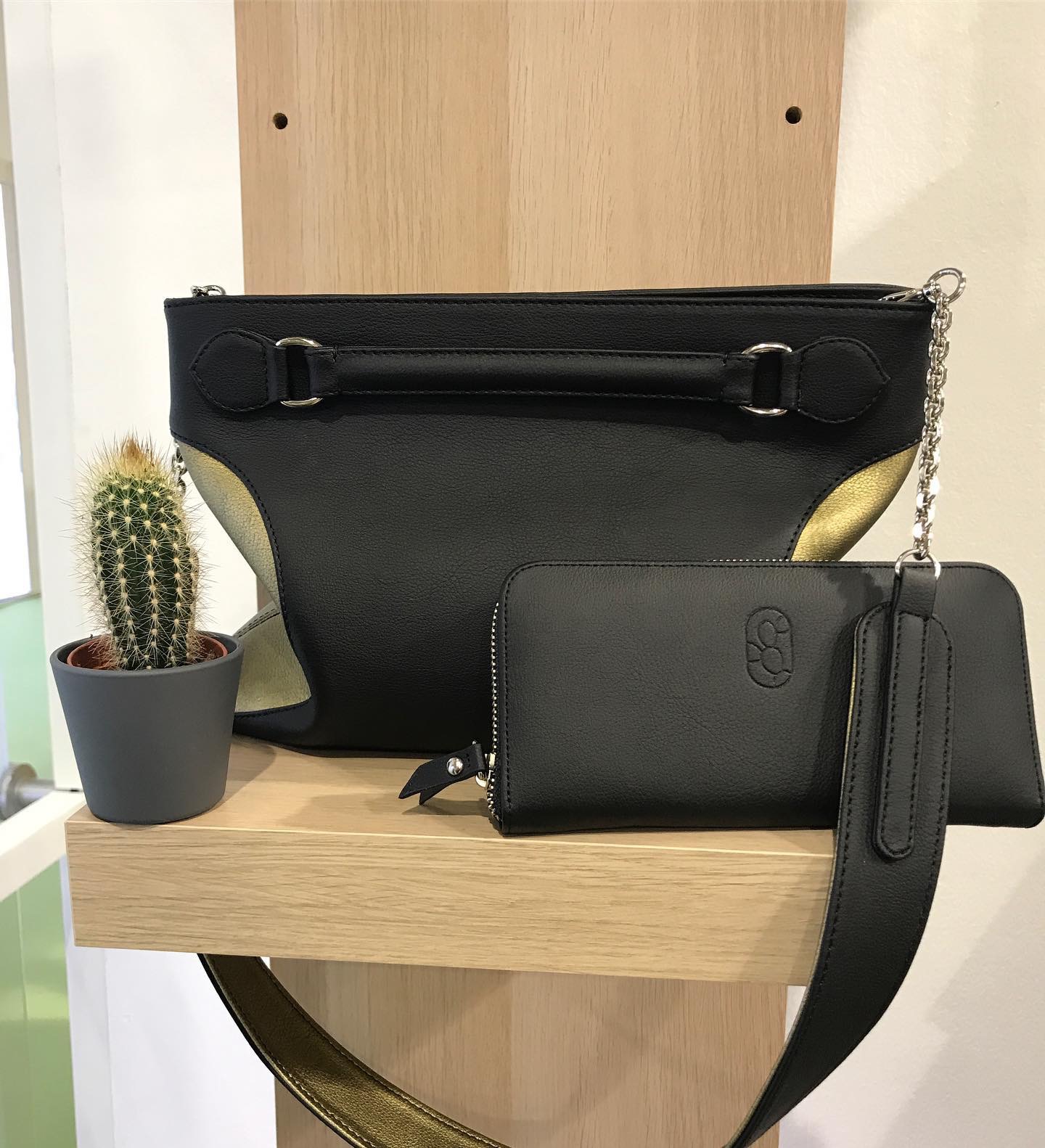
Figure 5. Purse and wallet made from Desserto vegan leather
[Source: Image courtesy of Desserto]
López Velarde and Cázarez are also planning to work with car companies based in Mexico to create a line of cars with vegan leather seats.
Adrián López Velarde and Marte Cázarez are the founders of Adrian di Marti and the creators of the cactus-based vegan leather called Desserto that debuted at fashion shows across the world in 2019.
For More Information:
- Desserto. https://desserto.com.mx/
To Learn More:
Fashion Industry
- “How much do our wardrobes cost to the environment?” 2019. World Bank. https://www.worldbank.org/en/news/feature/2019/09/23/costo-moda-medio-ambiente
- “These facts show how unsustainable the fashion industry is.” 2020. World Economic Forum. https://www.weforum.org/agenda/2020/01/fashion-industry-carbon-unsustainable-environment-pollution/
- “The Apparel Industry's Environmental Impact in 6 Graphics.” 2017. World Resources Institute. https://www.wri.org/blog/2017/07/apparel-industrys-environmental-impact-6-graphics
Leather
- “India: The Toxic Price of Leather.” 2014. Pulitzer Center. https://pulitzercenter.org/reporting/india-toxic-price-leather-0
- “Inside Bangladesh's Polluted, Billion-Dollar Leather Industry.” 2017. Wired Magazine. https://www.wired.com/2017/01/adib-chowdhury-a-thousand-polluted-gardens-inside-bangladeshs-polluted-billion-dollar-leather-industry/
Written by Rebecca Kranz with Andrea Gwosdow, PhD at www.gwosdow.com
HOME | ABOUT | ARCHIVES | TEACHERS | LINKS | CONTACT
All content on this site is © Massachusetts
Society for Medical Research or others. Please read our copyright
statement — it is important. |

